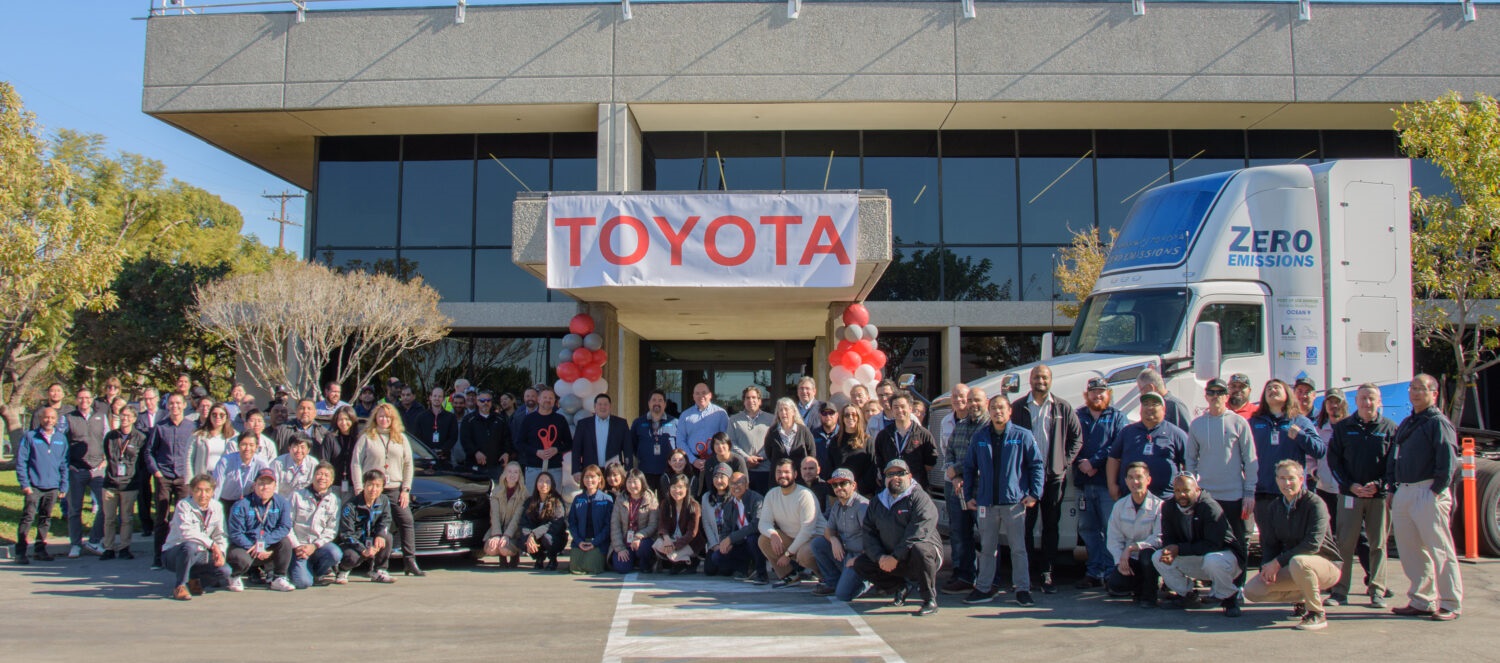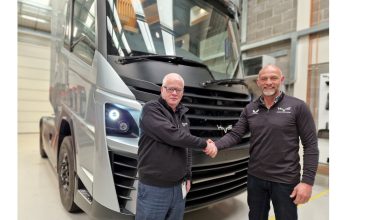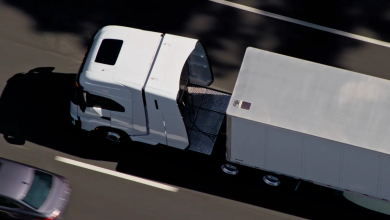Toyota renames California office to North American hydrogen HQ

GARDENA, Calif. – Toyota Motor North America (TMNA) announced that it is renaming the TMNA R&D California office as its new North American Hydrogen Headquarters (H2HQ). This move is to reaffirm its commitment to support fuel cell and additional hydrogen-related products and technology toward a hydrogen economy. The office workspace at the new H2HQ was recently redesigned for its teams working from research and development to commercialization planning and sales of hydrogen-related products and technologies. There are plans to add key features to the H2HQ campus in the future such as a flexible microgrid, sustainable customer education center and more.
“Toyota has developed hydrogen fuel cell electric solutions for more than three decades. We will continue to advance this scalable, zero-emission technology as part of our electrified portfolio,” said Ted Ogawa, President and CEO, Toyota Motor North America. “Renaming this facility as North American Hydrogen Headquarters represents our leadership in fuel cell development. We’re creating real-world products to help reduce carbon emissions.”
Last year, Toyota Motor Corporation reorganized its hydrogen business in Japan to create what it calls “Hydrogen Factory” with the idea to bring all hydrogen-related work under one location and accelerate customer-oriented product development and production in fuel cell or hydrogen-related products. Then, Toyota Motor Europe announced its own “Hydrogen Factory” with the aim to further grow Toyota’s hydrogen business and stimulate wider roll-out of hydrogen ecosystems and infrastructure across Europe.
H2HQ will drive North American-led hydrogen initiatives. It will support the localization of global hydrogen-related technologies and products. These include light-duty fuel cell applications, heavy-duty fuel cell opportunities, stationary fuel cell power generation, port vehicle applications, and more. The facility already provides impressive research and development assets. Toyota boasts its largest dynamometer at 1.2 MW, a scalable test bench, and a hydrogen fueling station serving various vehicles. NA H2HQ’s aim to solidify fuel cell dominance includes housing multiple forthcoming projects, securing its position for growth and leadership.
“I’m very pleased that Toyota is building on its longstanding commitment to California. They are locating their North American hydrogen headquarters here in the Golden State,” said California State Senator, District 29, Josh Newman. “The work done there is propelling California toward a dynamic, clean-energy economy. This will reduce carbon emissions and foster environmental stewardship. It will also extend California’s leadership in this important space, along with green hydrogen initiatives throughout the state.”
Construction has begun on a flexible microgrid that features energy sources available today, including a 230-kW solar photovoltaic system, a 1-MW stationary proton exchange membrane (PEM) fuel cell generator, 325-kW solid oxide fuel cell (SOFC), and an onsite 500-kWh battery energy storage system. The microgrid is designed to support the campus’ energy needs, allowing it the ability to operate off-grid. The system is expected to be fully operational by 2026.
“California has ambitious goals to achieve clean air, carbon neutrality and a vibrant economy. Toyota’s investment expands research and development of hydrogen fuel cell technology in our state. This innovation accelerates the development and deployment of zero-emissions transportation options. Particularly, it impacts the decarbonization of the goods movement sector,” said CARB Chair Liane Randolph.
In the future, Toyota’s plans for the new North American Hydrogen HQ will include a sustainable education center. It will be available for tours by reservation. Moreover, the center will serve as a hub where individuals can explore Toyota’s sustainable vision, emphasizing hydrogen’s pivotal role.
30+ Years of Development
From creating one of the world’s first mass market passenger fuel cell electric vehicles in the Mirai, to applying and scaling the technology now to other applications that can benefit from zero-emissions, including heavy-duty transport, power generation systems, and others, Toyota’s research and development with hydrogen fuel cell technology spans more than 30 years.
For much of that time, the Gardena office supported or initiated a wide range of fuel cell electric projects. The Fuel Cell Development (FCD) team was instrumental in supporting the development of Toyota’s light-duty Mirai, launched back in 2015. Furthermore, the team collaborated with industry partners to help support infrastructure growth through the state of California.
In 2017, Toyota’s FCD team addressed decarbonization efforts at local ports. After acquiring a Class 8 truck, they demonstrated fuel cell technology’s scalability by fitting it with two Mirai fuel-cell stacks. This effort then led to a collaboration with PACCAR’s Kenworth brand to build 10 proof-of-concept trucks. Trucks supporting the “Shore to Store” ZANZEFF project showcased hydrogen-powered fuel cells’ viability as zero-emission powertrains in heavy-duty applications. PACCAR and Toyota later agreed in 2023 to pursue commercialization of the project. Moreover, Toyota would supply the fuel cell powertrain kits from its Kentucky plant as a Tier 1 supplier.
Most recently, Toyota has demonstrated a non-automotive opportunity for hydrogen-powered fuel cell technology in stationary power generation. Toyota and TRD partnered to build a stationary unit to provide electricity at events where it was not readily available. They launched the first public activation at an LPGA Tour stop, where the unit supported the power needs of the event stage and sound system. Moreover, the solution provided clean, quiet power that was proven to capably replace traditional diesel generators. Last year, Toyota built a 1MW fuel cell electric generator for the National Renewable Energy Laboratory in Colorado to support microgrid testing at the facility. Earlier this year, Toyota collaborated with Kohler on a prototype stationary generator. It aims to provide backup emergency power for Klickitat Valley Health hospital in Goldendale, Washington.




One Comment